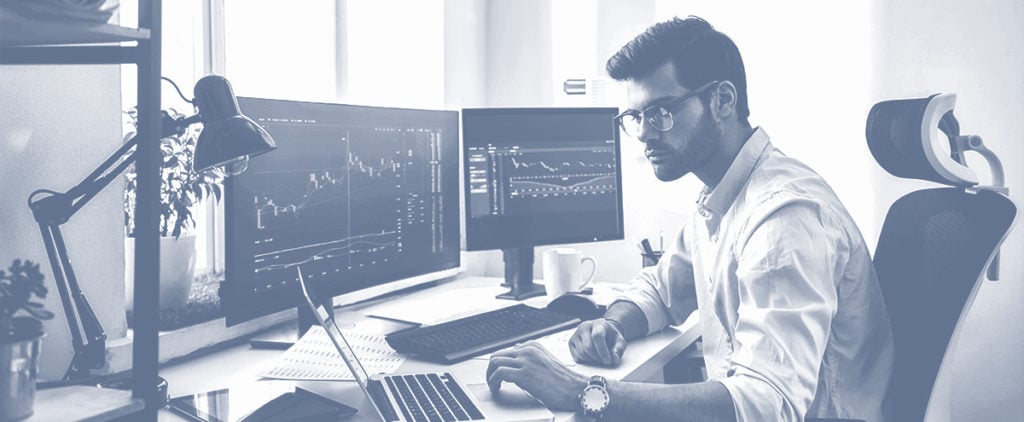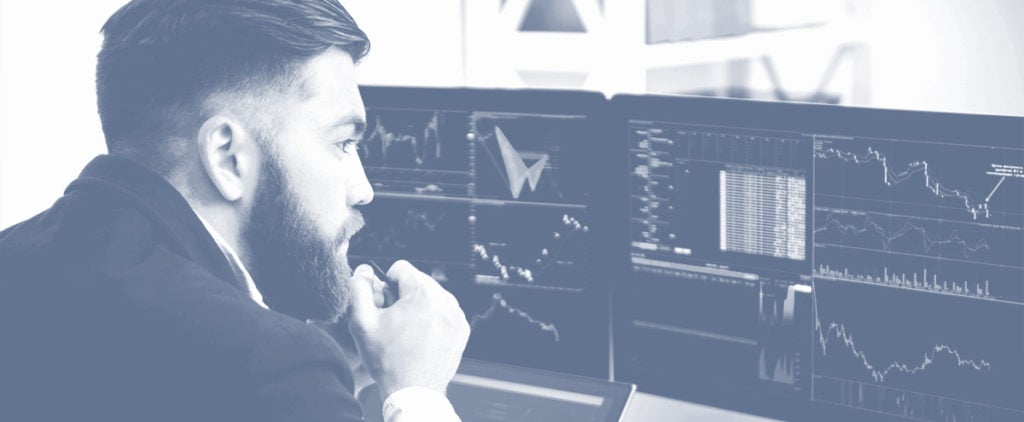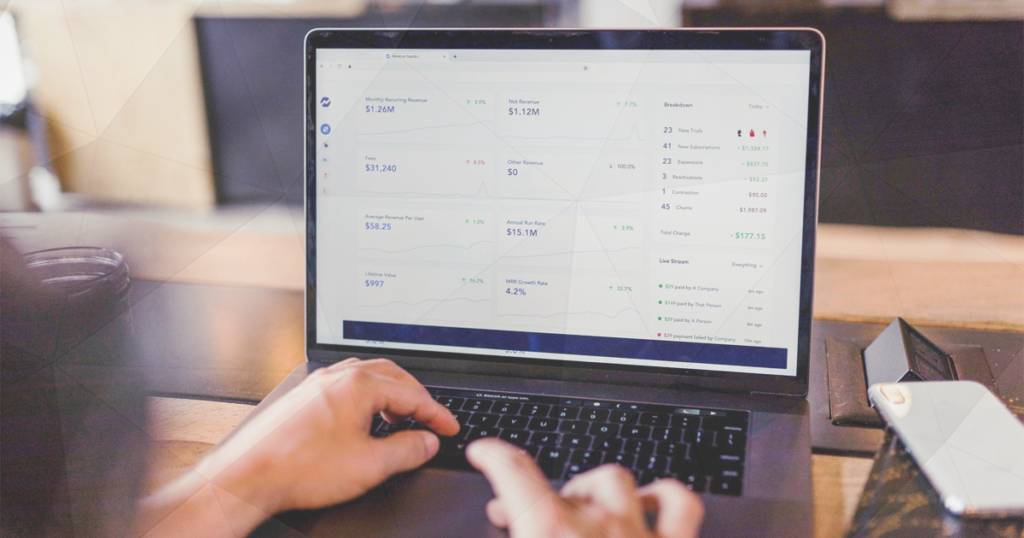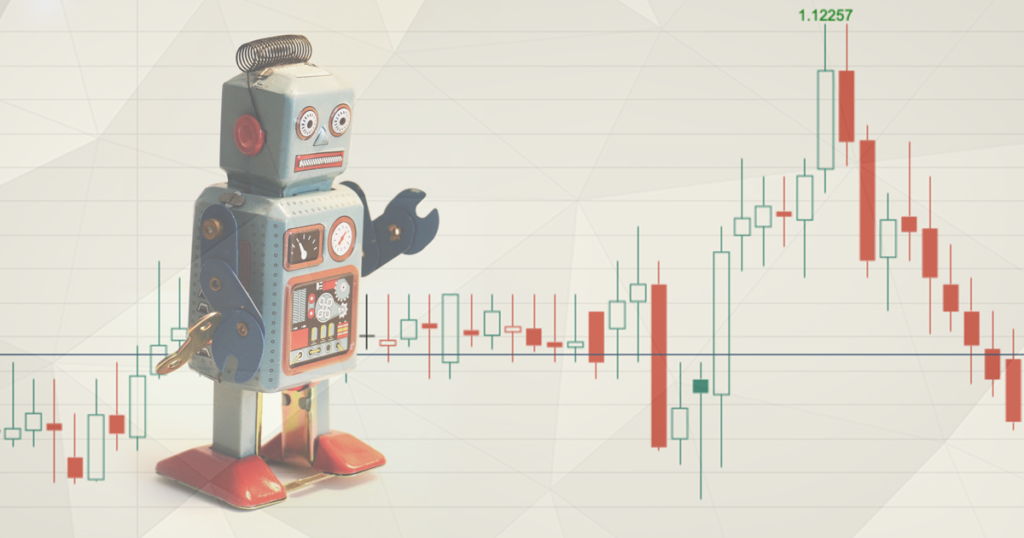How do you Become a Professional Trader?

If you’re starting out in the markets, you may wonder what it takes to become a professional trader.
There are many trading career paths worth pursuing, you can:
- Trade for a hedge fund or large investment bank
- Open your own asset management firm and trader other investors’ money
- Trade for your own account from the comfort of your home
Believe it or not, professional traders come from a range of jobs and industries. They don’t necessarily have a background in economics and finance. This shows that everyone can learn to trade and become a professional trader no matter what their educational background is.
Naturally, if you’re holding an MBA or MSc in economics, you’ll have a notable advantage when it comes to understanding important fundamental concepts. On the other hand, engineers and IT specialists often specialise in developing automated trading programs or pursue a career as quant-traders in large hedge funds.
In this article, we’ll cover how to become a professional trader.
How to Become a Forex Trader?
Forex traders try to anticipate future price movements of currency pairs and profit from the opening and closing prices of their trades. Just like stock traders, Forex traders buy when they think a currency will shoot up in value. They sell when their analysis shows that a currency will sink. Check out our Beginners Guide to Forex for more information.
The following list reveals the learning phases of a self-taught Forex trader.
Try to identify your current phase.
The 5 Phases of a Forex (or Stock) Trader
Phase 1: Unconscious Incompetence
This is the first phase of any trader. They might know what the Forex market is about, but they’re completely unconscious of how much they have to learn to become a successful trader.
All of their trades are over-leveraged, risk management is still an unknown concept and overconfidence leads to overtrading the market. This phase can last up to a few weeks.
Phase 2: Conscious Incompetence
This is the phase in which you realise that trading is not that ease and that there is much work ahead. You become conscious of your incompetence as a Forex trader. You start buying e-books, try different MetaTrader EAs and clutter your charts with plenty of useless technical indicators.
During this phase, the majority of amateur traders give up on their dream and collapse on the way to become a trader. This phase can last for years.
Phase 3: The A-ha Moment
While you’re still in the second phase, you’ll suddenly have a eureka moment that will help you realise what the market is really about. You’ll start to understand that no one can consistently anticipate price-movements in the next 10 seconds, 10 minutes, or 10 days.
You’ll also realise that trading is not about being right all the time, but about risk and money management, discipline and control of emotions. In this phase, you’ll start to develop your own unique trading strategy.
Phase 4: Conscious Competence
In this phase, you’re becoming conscious that your trade setups are generally good, despite a few losers here and there. All in all, you manage to stay around break-even and don’t have negative feelings towards losing trades.
You’re aware that they’re part of the game, and that you’ll eventually manage to tweak and fine-tune your strategy so that you’ll be making more money than you’re losing.
Phase 5: Unconscious Competence
This is the final phase of any trader in which trading becomes a job like any other. You’ve mastered the markets and don’t get excited about winners or losers. You’re trading on auto-pilot and your capital starts growing rapidly.
Getting from phase 1 to phase 5 is not as easy as it seems. Failure is common during the first and second phase. In fact, many traders won’t manage to get past phase 2, and only a minority of the most persistent and mentally-prepared traders will arrive at the trading utopia – phase 5. Having the “A-ha” or eureka moment in phase 3 is the most important breaking point in your learning process. The majority of the crowd gives up in phase 2 because of frustration.
- Learn more, take our premium course: Trading for Beginners
How to Become a Day Trader from Home?
Day trading the Forex market is one of the most popular trading styles among retail Forex traders. It’s not as fast-paced as scalping, but it still returns more trades than swing trading. Day traders usually close all of their open positions by the end of the trading day, which means there is also no exposure to overnight market movements which can turn a profitable position against you.
However, bear in mind that there are certain limitations and rules for day traders if you’re based in the United States. The US Financial Industry Regulatory Authority (FINRA) regulates day trading with the following rules:
“The rules adopt the term “pattern day trader,” which includes any margin customer that day trades (buys then sells or sells short then buys the same security on the same day) four or more times in five business days, provided the number of day trades are more than six percent of the customer’s total trading activity for that same five-day period. Under the rules, a pattern day trader must maintain minimum equity of $25,000 on any day that the customer day trades. The required minimum equity must be in the account prior to any day-trading activities. If the account falls below the $25,000 requirement, the pattern day trader will not be permitted to day trade until the account is restored to the $25,000 minimum equity level.”
To become a day trader from home, you need to practice the following day trading techniques until you completely master them. It may take time to get fully familiar with the price-movement on shorter-term timeframes, but day trading could be well worth the learning.
How much do traders make from home?
It all depends on their dedication, discipline and experience.
Three Main Forex Day Trading Techniques
While you can use any strategy and technique to day trade the Forex market, there are three main day trading techniques which are used by retail Forex traders from home: breakout trading, trend-following trading and counter-trend trading. In the following lines, we’ll dig deeper into each of them.
Breakout Trading
As the name suggests, breakout trading is based on breakouts off major technical levels. Breakout traders often rely on chart patterns, channels and support and resistance levels to trade an upcoming breakout. They aim to anticipate a breakout before it happens. As the initial buying or selling momentum is the highest immediately after the breakout and creates the largest profit opportunity.
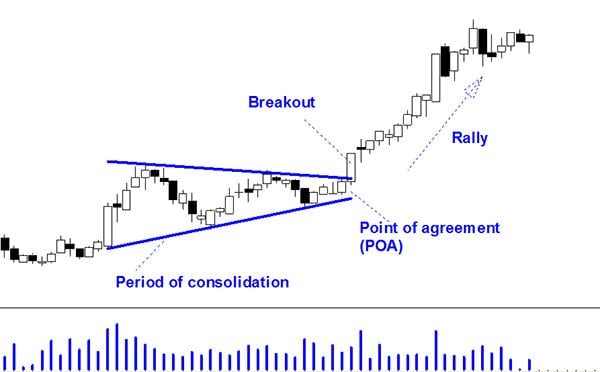
In addition, breakout traders can also use pending orders, such as stop or limit orders, to break an upcoming breakout. This is a great technique as you don’t have to be in front of your trading platform when the actual breakout happens. The pending order will automatically execute a market order once the price reaches the pre-specified price-level.
- Learn more, take our free course: Simple Breakout Strategy
Trend-Following Trading
Trend-following trading is perhaps the most rewarding trading technique not only in day trading, but also among other trading styles. It involves opening a position only in the direction of the underlying trend. If the current trend is up, a trend-following trader will look to open a long position. Similarly, if the current trend is down, the trader would look for a potential short setup.
Trend-following trading has a proven track record. One of the most famous trend-following traders, who bases his trading on a purely technical approach, is Bill Dunn. Dunn caught both the strong downtrend in the USD/JPY pair in the first half of 1995 and the following uptrend in the second half of the same year, using only a simple peak and trough analysis and a trend-following technique.
However, he left his trades open for quite some time, which may be beyond the time-horizon of a typical day trader.
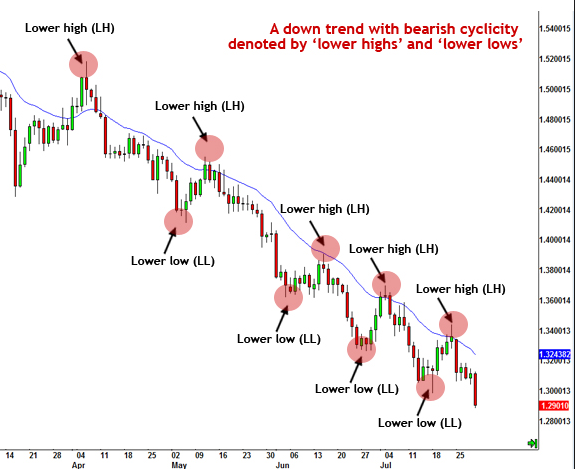
To enter a trend-following trade, analyse the peaks and troughs of the price, i.e. the higher highs and higher lows of an uptrend, and the lower lows and lower highs of a downtrend. Ideally, you want to open a long position immediately after a fresh higher low is formed during an uptrend, and a short position immediately after a fresh lower high is formed during a downtrend.
To avoid market noise, make sure to perform your analysis at least on the 4-hour timeframe.
Counter-Trend Trading
Finally, counter-trend trading represents a contrary approach to trend-following trading. Counter-trend traders sell during uptrend, and buy during downtrends, aiming to profit on the short-term price corrections. This approach carries significantly more risk than breakout or trend-following trading, and should be used only by experienced traders.
To find potential counter-trend trade setups, traders usually utilise Fibonacci retracement and extension levels, support and resistance zones and channels.
- Learn more, take our free course: Fibonacci: Fast-Track
Read:
- How To Enter Price Action Trades The Correct Way
- A Day in the Life of a Day Trader
- The Essential Guide to Choosing a Broker
How to Become a Futures Trader?
If you’re interested in the futures market, you’ll have to go through the identical five phases like Forex or stock traders. The futures market has certain characteristics which make it a slightly different market than spot markets.
Futures contracts are contracts between two counter-parties, in which the sides involved agree to buy or sell a financial instrument or commodity at a pre-specified price and date.
Once you grasp the basics of futures contracts, you’ll still have to learn how to trade the market and go through the five phases outlined above.
Is it Worth Pursuing a Forex or Stock Trading License?
You can trade stocks, currencies or any other financial instrument either for your own account, or for a trading firm’s account. While you don’t need any licenses to trade for your own account, you will have to meet the requirements of the Financial Industry Regulatory Authority to trade other investor’s money as a trader in a US-based trading firm.
There are many types of FINRA registrations available to traders, but most likely you’ll have to meet the requirements for a General Securities Registered Representative which requires you to pass the Series 7 exam. There are also other, more limited types of FINRA registrations which allow you to only trade options, futures or government bonds.
The following table shows a list of common FINRA securities examinations. If you want to check the complete list, take a look at FINRA’s website.
Series 3 – National Commodities Futures Exam*
Series 5 – Interest Rate Options Exams
Series 6 – Investment Company and Variable Contracts Exam (Mutual Funds/Variable Annuities)
Series 7 – General Securities Representative Exam (Stockbroker)
Series 11 – Assistant Representative-Order Processing
Series 15 – Foreign Currency Options Exam
Series 17 – United Kingdom Securities Representative Exam
Series 22 – Direct Participation (Limited partnerships) Exam
Series 30 – NFA Branch Manager Exam
Series 31 – Futures – Managed Funds Exam
You could pursue a technical analysis license which may be helpful both in your private and professional trading career. The CMT association offers the well-known Chartered Market Technical Program and follows a strict learning curriculum to master the art of technical analysis. Alternatively, the International Federation of Technical Analysts (IFTA) hosts the Certified Financial Technician program (CFTe), which is similar to the CMT program.
Pro Trader Strategies: How to Trade Like the Pros
Now that you know how to become a professional trader, let’s compare how professional and retail traders trade the market. There are well-known differences in the way professional and retail traders trade. Since the majority of retail traders lose money in the market, it may be wise to learn and understand some professional traders’ techniques that could be easily applied to a retail trading account.
Some of the most important differences are outlined below:
Number of positions: While retail traders tend to have up to three active positions at any given time, usually consisting of their favourite currency pair and a commodity, professional traders have a quite different approach. They create a portfolio of trades, sometimes with up to 20 trades, and carefully pick the currency pairs and position sizes for their positions to reduce market risk.
Position sizes: Retail traders often trade on very large leverages with a very high market exposure. As a result, both profits and losses are magnified and trading accounts are wiped out fast. Professional day traders know that leverage is a double-edged sword, and usually don’t trade on leverages higher than 10:1.
Trading horizon: Retail traders trade on very short timeframes, while professional traders do the opposite – they focus on daily and weekly timeframes. Pro traders know that higher timeframes return more reliable trade setups than shorter timeframes, and they hold their trades for a few days, weeks or even months.
To become a professional trader is not plain sailing
There is much to learn, and it takes months of dedication, discipline and experience to get to the eureka phase of a trader’s learning curve.
Bear in mind that many traders quit during the second phase, which is conscious incompetence, as they become too frustrated with their losses and the number of different indicators and trading strategies in their trading. Don’t get disappointed – only the most persistent traders manage to arrive at the final fifth phase in which they start to trade on auto-pilot.
If you’re going to open more than four trades in five consecutive trading days, pay attention to FINRA’s rules for professional day trading. You’ll need to pass FINRA’s Series 7 exam if you want to work as a trader for a trading firm on Wall Street or NYSE and trade other investors’ money.
Self-taught traders could pursue CMT’s or IFTA’s technical analysis designations if they want to master the art of technical analysis. They can also learn it at My Trading Skills.
- Learn more, take our premium course: Trading for Beginners


